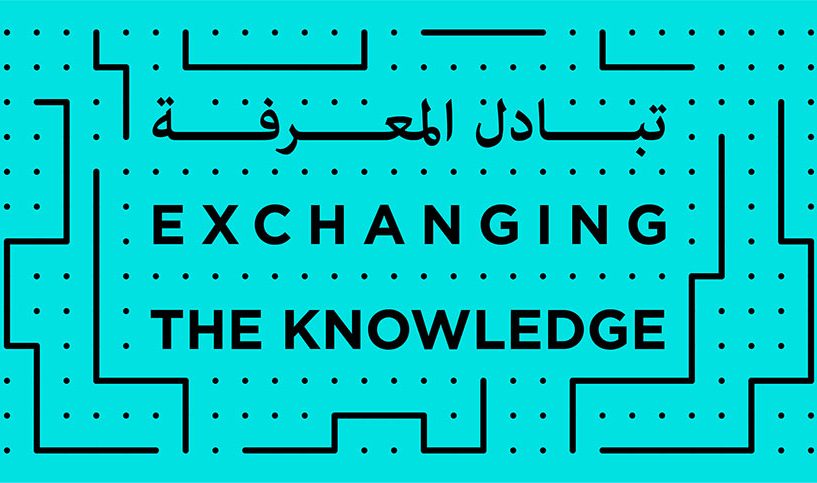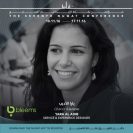Upon completing a comprehensive regional tour, dubbed the “Nuqat Tour”, the non-profit organization’s think-tank looked to the tour’s findings for inspiration on how we can create a new mindset to combat outdated societal beliefs, or if you may, barriers to new mind shifts and elastic thinking. With the upcoming ten-day regional conference right around the corner, understanding these findings arrives as a great starting point to engage with new ideas.
A framework of the tour: The tour has taken Nuqat to 11 Middle Eastern Cities; Abu Dhabi, Amman, Beirut, Dhahran, Doha, Dubai, Jeddah, Kuwait, Manama, Muscat and Riyadh, where they have completed a total of 33 exploratory sessions. In order to gain a clear understanding of the similarities and difference of the cultural landscape in the region, they purposefully discussed the same three topics across all 11 cities. Although the topics remained the same, they are broad enough that Nuqat has been able, with the cooperation of the moderators, to tailor and curate the content of each session to tackle and investigate the issues pertaining to that specific city.
The three themes discussed in each city were:
1. Design and Education:
Designing for Sustainable Solution
The volatility in global commodities markets have highlighted the deeply-rooted problems in the economic structures of many of the region’s states. An overreliance on welfare state provisions –primarily guaranteed employment – has undermined the potential for an alternative sustainable sector to develop. How can we start laying a foundation for a design culture that can respond to the urgent issues confronting us? How can a multidisciplinary approach to education and teaching encourage such changes? Are there examples we can learn from? What policies and strategies can be enforced to nurture the development of creative and cultural industries in the Middle East?
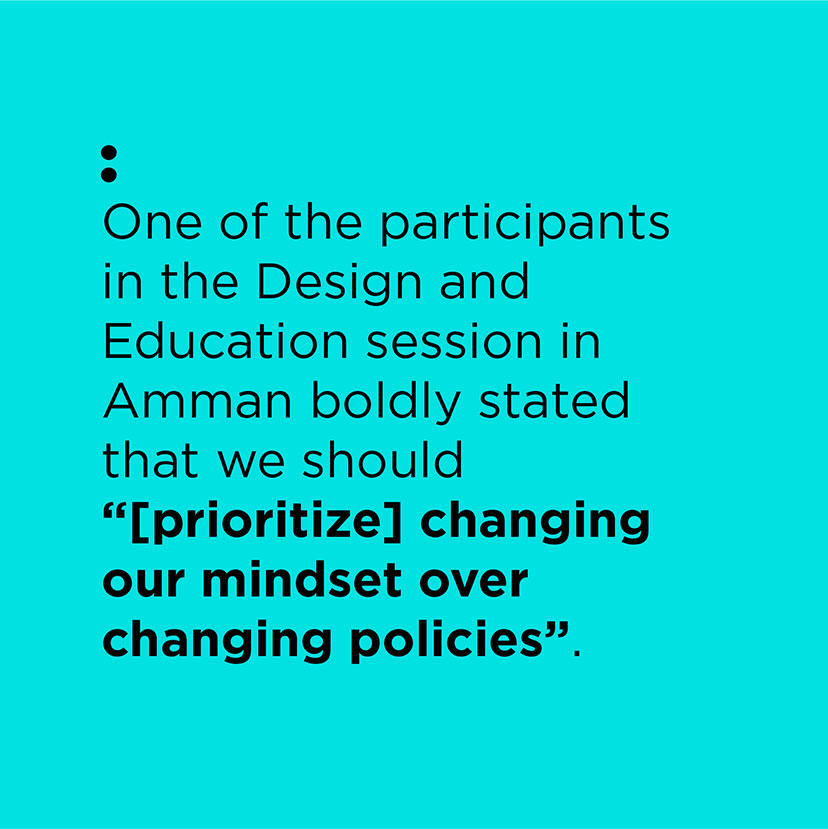
2. Architecture and Urbanism:
The Built Environment on Social Behaviors
Understanding the manner in which knowledge is formulated and shared within cities is essential in urban planning and in aiding in the development of a knowledge-based economy. To what extent is urban planning linked to social progress? How does an anthropological approach to design affect human behavior within the urban environment and encourage further social and cultural interaction?
3. Funding the Creative Economy:
Rethinking Investing
Government grants and funding, crowd-funding, angel investors, private equity portfolios and so on need to be directed towards investing in innovative and creative businesses and industries. What needs to be done? Do we have small-scale successful models that we can capitalize on? Can large corporations collaborate with SMEs to develop a financial sustainable economy? How is culture financed around the world? How can we monetize content in the digital world?

While the sessions themselves were limited to a small number of individuals, the knowledge that came out of the sessions will be accessible to the public. The findings of the session were analyzed and summarized into reports that could serve as policy briefs, sources for academic research or simply as an informative read. Although Nuqat has yet to publish the reports, they have laid out the similarities and differences between the cities that they visited in hopes of understanding and connecting the region.
MENA or Arab region? An ongoing discussion is being had across the world as to whether it is best to describe the region as the Arab region or the MENA (Middle East and North Africa) region. The latter is a geographical distinction that is argued to be vague due to the fact that Turkey, Iran and Israel are often times pooled into the MENA region. Unlike the term MENA, the Arab region is used to refer to countries that are predominantly Arabic-speaking. To many, this is seen as inaccurate as there are many other languages that make up the “Arab” region like Kurdish, mainly spoken in Iraq and Syria and Berber, primarily spoken in Morocco, Algeria, Tunisia, Libya and Egypt.
While the discourse regarding the labeling of the Middle Eastern countries is ongoing, one cannot help but bring up the cultural and social differences that exist amongst these countries. During the tour, it was clear that there are substantial differences between the 11 cities, however, there were many similarities, mainly in the struggle of enhancing the creative economy.
So Similar: Whether it was Doha or Beirut, the overarching similarity, and the main source of inspiration for the Nuqat 2019 Regional Conference theme, between the cities was the urgent need to critique and change our current mindsets. Most of the participants throughout the sessions emphasized that personal, social and structural barriers exist due to the fixed mindset that many people have adopted. One of the participants in the Design and Education session in Amman boldly stated that we should “[prioritize] changing our mindset over changing policies”.
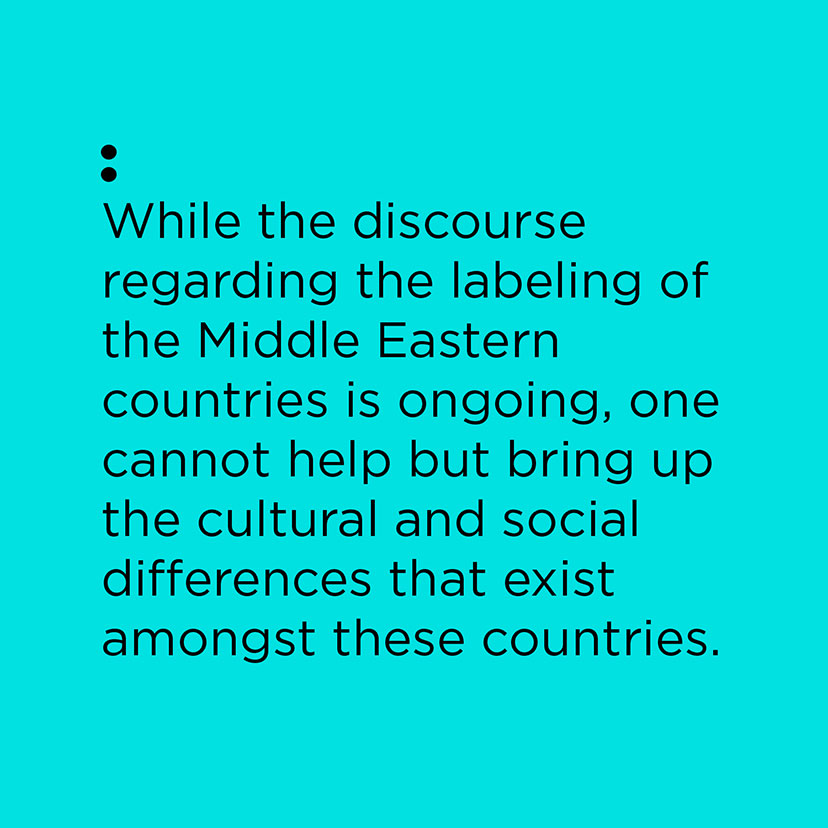
Digging deeper into the specifics of each session, Nuqat has found that throughout the cities there were common issues that need to be addressed and reimaged.
During the Architecture and Urbanism sessions, most participants in many of the cities pointed to the discriminatory design of the urban plan which has perpetuated a divide among social classes. In turn, this divide has created uneven amenities and infrastructure throughout the city, mainly in areas where marginalized and minority communities live, creating a social and economic divide between residents. “The city is built favoring automobiles rather than pedestrians” is a statement that echoed across all 11 cities. Most of the cities have inadequate or even nonexistent public transportation, thus fragmenting the city further.
Participants were encouraged to develop solutions and suggest next steps that would serve as a starting point to solving the issues discussed throughout the sessions. In the Architecture and Urbanism sessions, many of the next steps required the participation of community and residents. To activate the cities, participants emphasized the importance of involving the community in planning and building community centers and spaces that would promote engagement and interaction. While the community should be at the forefront of planning and building of the city, participants could not help but indicate the importance that the government and private sector play in shaping the city. Local architects are eager to contribute to their city, yet their voices are not being heard as developers and government contractors tend to prioritize foreign firms, which participants mentioned lack the environmental and cultural understanding compared to the local architects.

Moving to the Design and Education sessions, the loudest and most repeated concern from all participants is that the education system does not value critical thinking, thus creating an education system that relies heavily on memorization and regurgitation. Most of the design programs, throughout the cities we visited, fail to prepare their students for the workforce, as students are not encouraged to intern or volunteer while they are studying. This has fostered a culture that lacks self-initiation as many creatives, mainly in the GCC, do not feel the urgent need to produce and create on their own as job security is high.
The designers and creatives that took part in the discussions voiced that they struggle to communicate the importance of design to their clients. Many perceive design as a luxury, thus undermining its crucial role in innovation and development. Therefore, awareness campaigns and educational sessions should target the general public with the goal of communicating the significance of design in everyday life.
Meanwhile, in the Funding the Creative Economy sessions, participants, most times a mix of venture capitalists, creatives and entrepreneurs, highlighted the difficulty in understanding the intangible value of creativity. Based on the testimonies that were collected from the sessions, creatives tend to have a hard time explaining to funders the monetary value that their project/initiative/business will bring. On the other hand, funders fail to understand the impact that art, culture and creativity could have on the city socially and culturally. In order to move past this roadblock, participants concurred that funders should change their mindset from viewing creativity simply as a beautifying process and look at it as an investment towards building human centric development in their city. Creatives should thus work towards illustrating the commercial and/or cultural value that would come out of their projects.
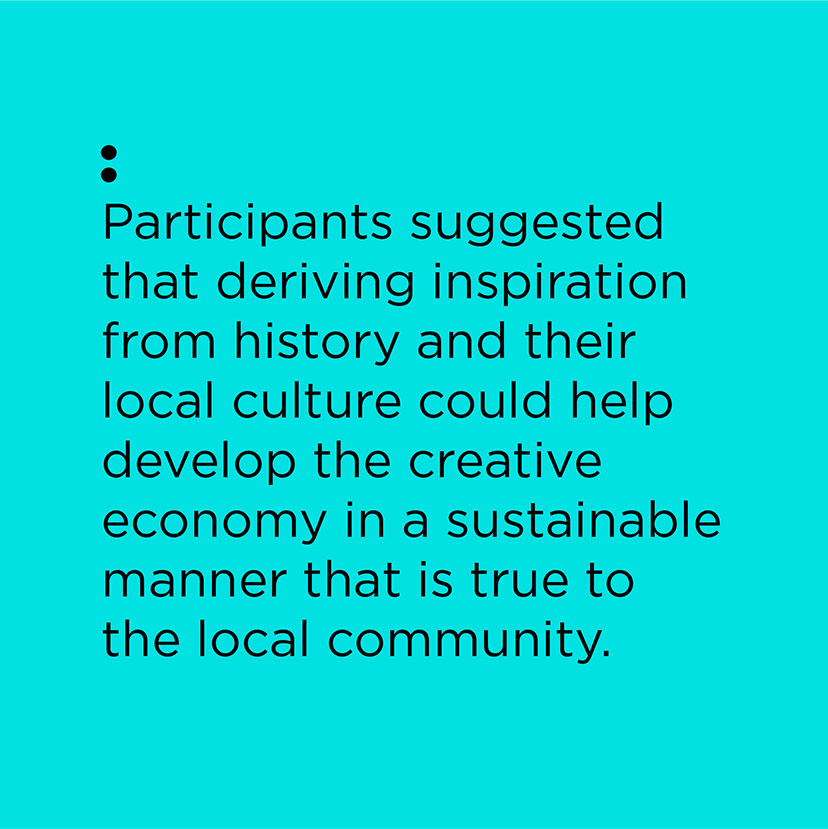
Due to the slow but growing creative economy in the region, many creatives find themselves freelancing as a way to make ends meet. Currently, there are very few laws protecting freelancers, which in turn has led to intellectual and property theft and delayed payments.
Yet so different: Highlighting the shared differences amongst the 11 cities allows for them to learn from one another’s mistakes and/or successes, while highlighting their similarities can bring them together to overcome shared barriers.
By comparing all 11 cities, it becomes obvious that there are two different classifications: those that are heavily reliant on government support and those that barely receive any support from their governments. Nuqat has found that the Gulf cities, except Manama, tend to depend heavily on the government, while Amman, Manama and Beirut mainly look for support from the private sector and international organizations.
Looking closer at the differences between the cities, we found that Dubai and Abu Dhabi have policies to help further the creative economy. The government of Abu Dhabi introduced “Design and Technology” into the state-wide education curriculum, while the government of Dubai set up a Design and Fashion Council that serves as a space for residents to voice their needs to the government.
Participants suggested that deriving inspiration from history and their local culture could help develop the creative economy in a sustainable manner that is true to the local community. While this was echoed in some of the cities, there were differing views that came out of the other cities. In Amman, participants pointed to the fact that creatives are too nostalgic, thus hindering their ability to look forward and develop new ideas. One the other hand, in all three cities in Saudi Arabia, participants mentioned the importance that culture and history play in the enhancement of the creative economy. In Muscat, cultural significance and celebration of the past are clearly evident, yet the attendees in Muscat mentioned that the government invests more in cultural preservation, rather than in innovative and creative ideas that could help contribute to the creative economy. The policies of the government in Muscat have led to an over-valuing of craftsmanship, which in neighboring Saudi Arabia is seen as a dying industry.
Each city has its strengths and weaknesses and while most cities have a lot of rewiring and reimaging to do, the intention of this tour is to build relationships throughout the region that would lead to collaborations and partnerships that transcend borders.
Written by Nuqat staff and Darell Hartman. Stay updated about Nuqat’s latest on Instagram @nuqat and visit www.nuqat.me for more information. For more Nuqat content, please visit bazaar.town/category/nuqat. Images courtesy of Nuqat.

